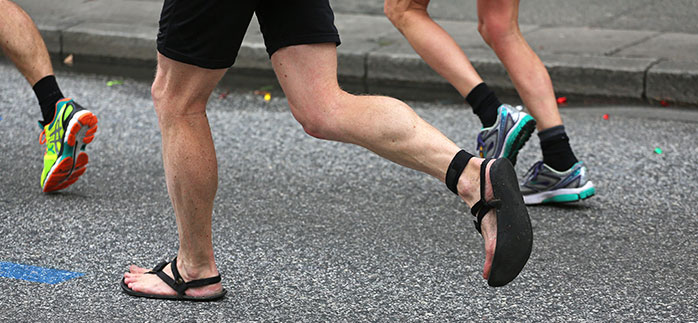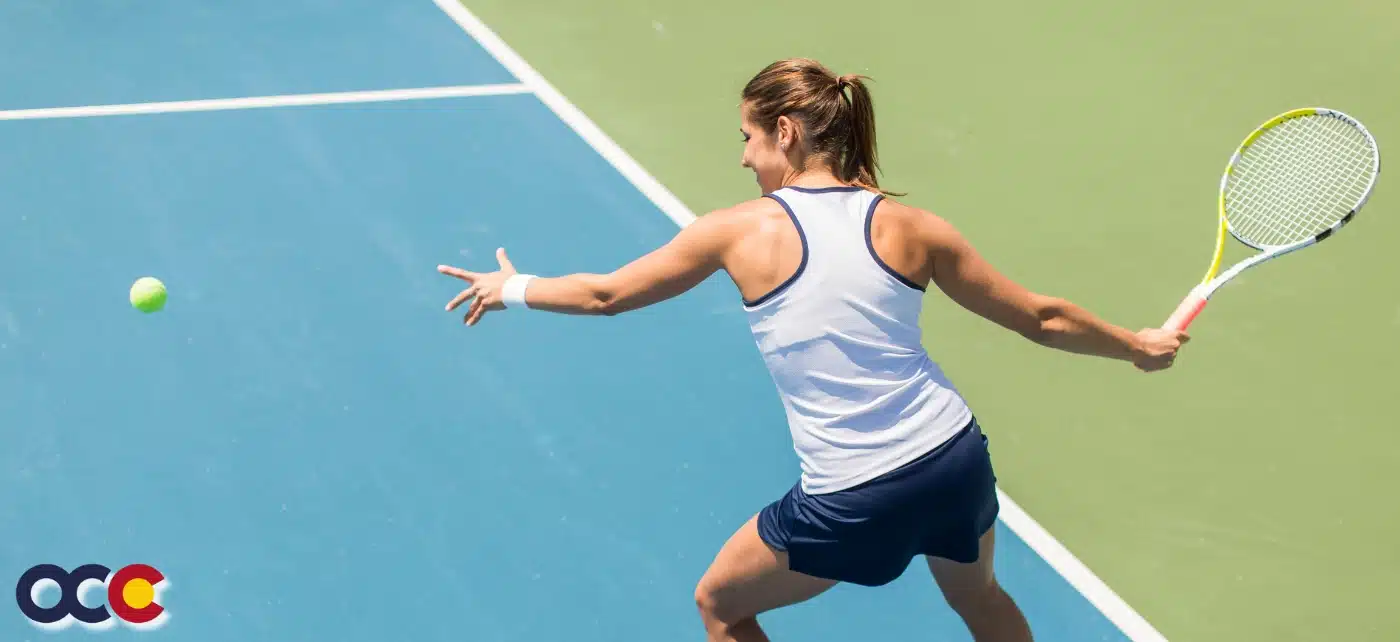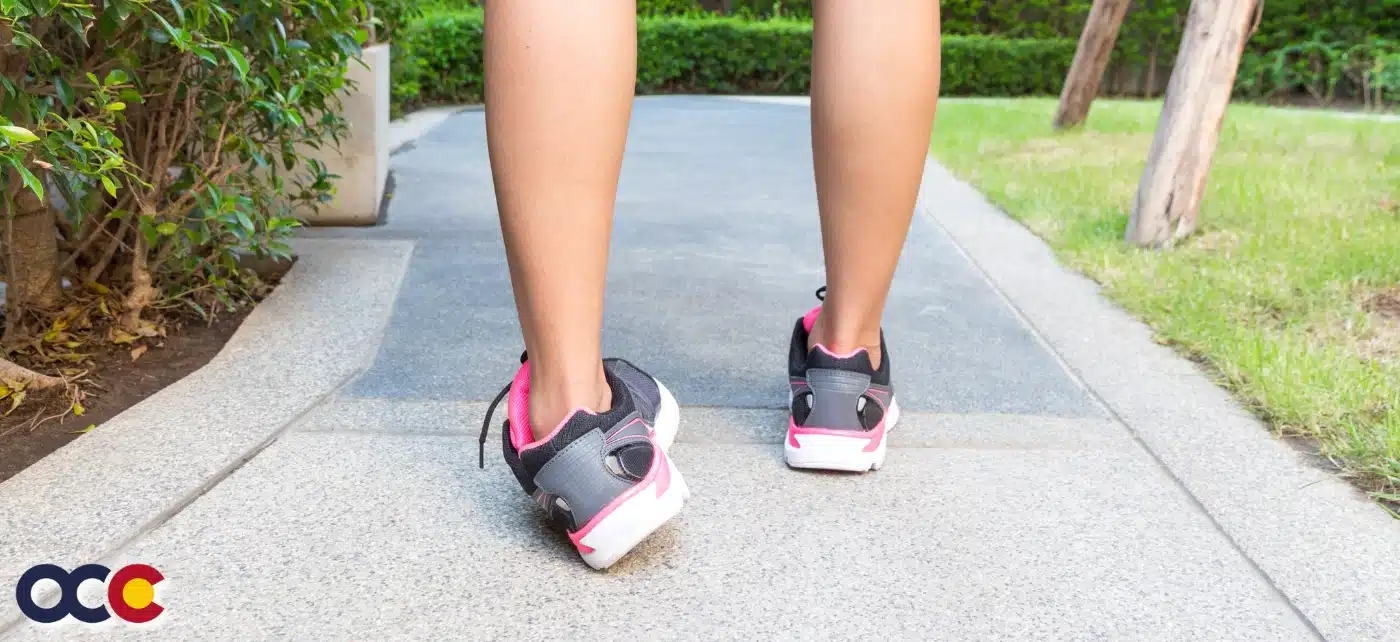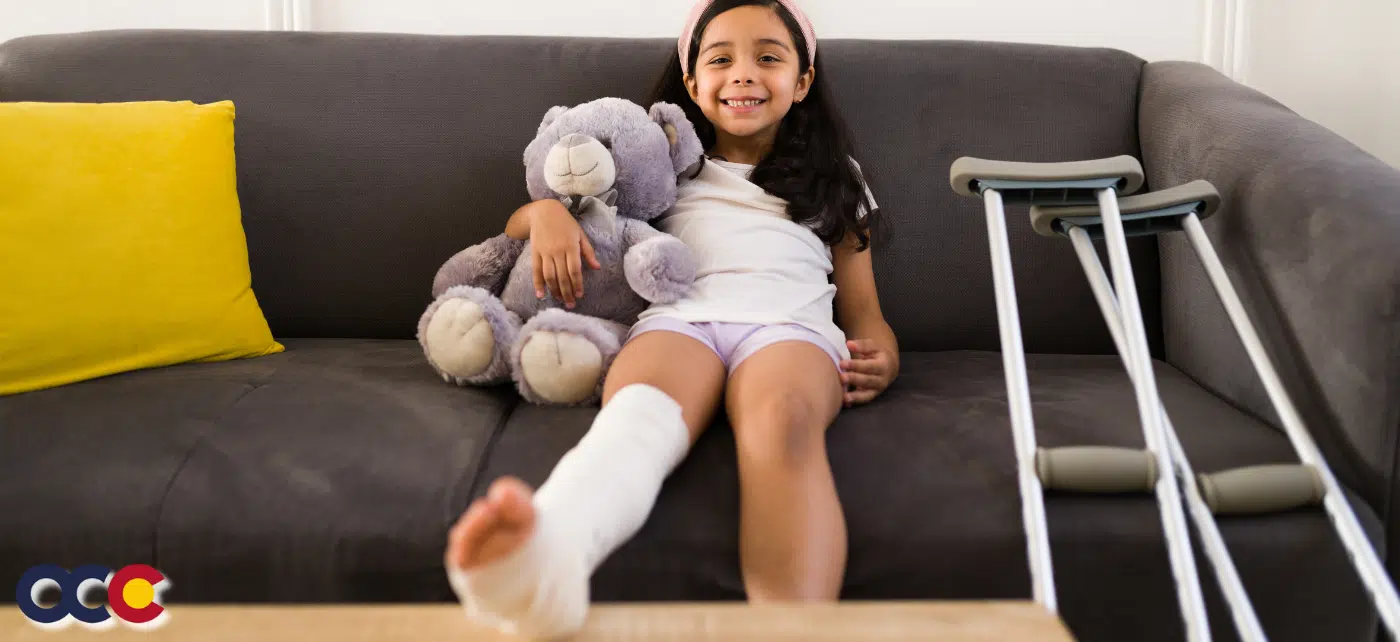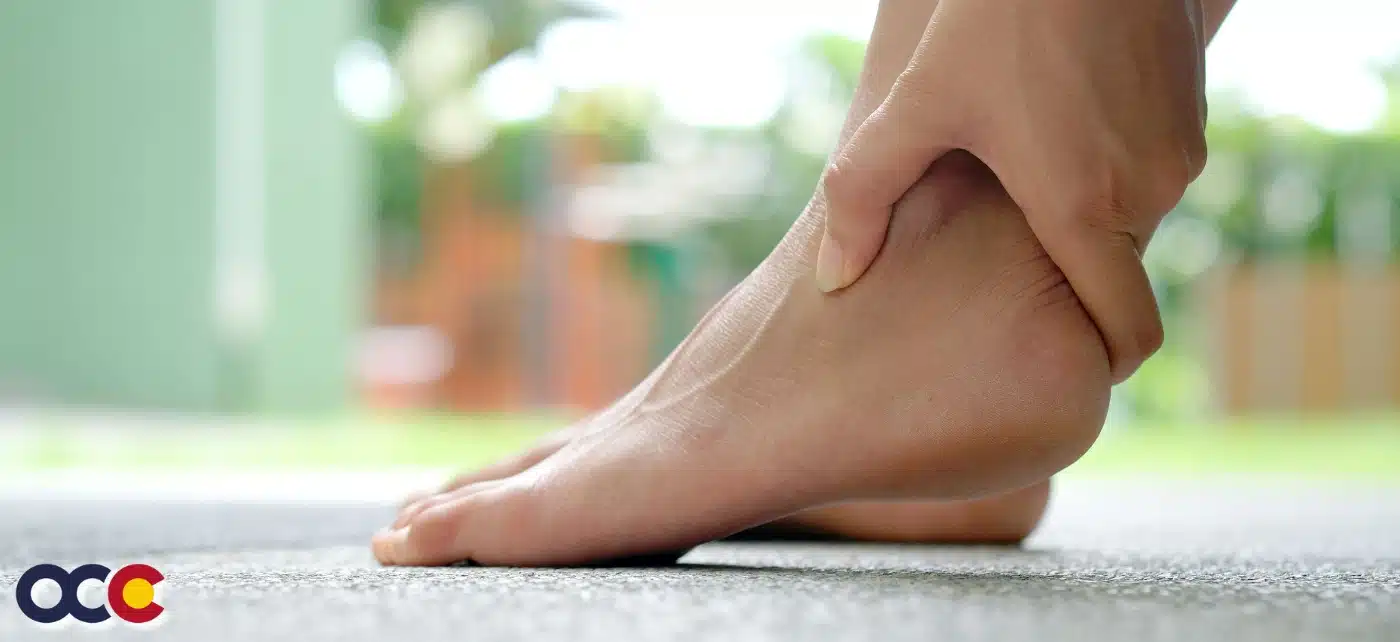It’s sandal season! And while that might make you (and your toes) jump for joy, the rest of your foot might not feel the same. In fact, many people experience pain on the bottom of their heel as warmer weather allows us to trade in shoes and boots for flip flops and bare feet. A condition – called plantar fasciitis – is the most common cause of pain on the bottom of the heel according to the American Academy of Orthopaedic Surgeons (AAOS), which reports approximately 2 million patients are treated for this condition every year.
But why now? The plantar fascia, a ligament that runs along the bottom of your feet, is designed to act as a support mechanism for your foot. Plantar fasciitis is typically caused by too much pressure or repeated strain, and this time of year, a seasonal or lifestyle change could be the cause.
- Scrapping supportive shoes in favor of flip flops
Winter boots, tennis shoes and other supportive footwear do a great deal to protect the heel and foot. When you ditch sturdy shoes for a flimsy pair of flip flops (or no shoes at all!) and then hit the street, your feet take notice. Think about a time where a quick trip to the store turned into a full day in flip flops. Repeated days of coming down on hard pavement with very little cushion or support to protect your foot can lead to plantar fasciitis.
- Couch to 5K… or None to Run
These popular workout concepts can kickstart your exercise plan, but “making too big a change too fast is also an invitation for injury,” says Dr. Keith Jacobson, podiatric surgeon at Advanced Orthopedic and Sports Medicine Specialists. True beginners need to build lower body strength and flexibility as they get started to avoid injury, and plantar fasciitis is very common among those who overdo it. In this case, the old saying “walk before you run” is great advice.
- Skipping the stretch
Especially if you are a beginner, don’t skip the stretch before or after working out. Tight calf muscles in particular put increased stress on the plantar fascia. Regular stretching improves your mobility and reduces the chance for injury.
- Getting your (outdoor) run on
Even if you’ve been hitting the gym year-round, running on a treadmill or cushioned indoor track is more forgiving on your joints and your feet. “A sudden switch to outdoor running often means pounding away the miles on city streets, says Dr. Scott Resig. “Asphalt or concrete is really rough on your feet and joints and can also lead to plantar fasciitis.”
- Started barefoot running?
No matter what surface you’re usually on, you’ve probably heard of barefoot running. But is it good for your feet and joints? Can it prevent, or does it cause, plantar fasciitis? The short answer is that more research must be done, and at the very least, it depends on how you started running.
Harvard researchers have extensively studied the mechanics of running and humans’ history as runners and found – among many other things – that most people who grew up and are accustomed to running barefoot strike the ground with the forefoot or midfoot first, rather than heel first, which is how most shod runners (aka most average Americans) strike the ground. But heel striking is not necessarily bad, and many shoe-wearing runners do it without discomfort or injury. Researchers even emphasize that “no study has shown that heel striking contributes more to injury than forefoot striking,” even though it is generally viewed as a higher-impact stride.
Does that mean you should lose the shoes and start barefoot running? Again, it depends, but know that merely removing your shoes does not immediately change your running gait and it’s wise to pursue any major adjustment with caution.
“If you already have heel pain or suspect plantar fasciitis, see an podiatric specialist before making any changes, and consider give yourself a break from running entirely while you determine the cause of your pain,” says Dr. Alan Ng, podiatric surgeon and foot and ankle specialist at Advanced Orthopedic and Sports Medicine Specialists. If you’re healthy and want to explore barefoot running, consider using a different shoe once per week, or start with a neutral or a minimalist shoe, which are lightweight and have a flat sole (vs the standard heel rise) but provide more protection and support than no shoes at all.
Listen to your body, get a professional diagnosis, implement treatment
If your heels are hurting and you’ve recently changed your activities (or your footwear), you might be suffering from plantar fasciitis and it’s time to see an orthopedic specialist. He or she will examine your foot, look for areas of tenderness at and in front of the heel bone.
Conservative treatment for plantar fasciitis helps 90 percent or more of those suffering and includes rest, ice, NSAIDs, cortisone shots and movement – including stretching and physical therapy. In more extreme cases, and only after failure of non-surgical treatment, surgical solutions may be recommended.
Need more information or an appointment? Get in touch!
[av_heading heading=’Best Foot Surgeons’ tag=’h3′ link_apply=” link=’manually,http://’ link_target=” style=” size=” subheading_active=” subheading_size=’15’ margin=” margin_sync=’true’ padding=’10’ color=” custom_font=” av-medium-font-size-title=” av-small-font-size-title=” av-mini-font-size-title=” av-medium-font-size=” av-small-font-size=” av-mini-font-size=” av_uid=’av-jxw60687′ custom_class=” admin_preview_bg=”][/av_heading]
[av_one_third first min_height=” vertical_alignment=” space=” custom_margin=” margin=’0px’ padding=’0px’ border=” border_color=” radius=’0px’ background_color=” src=” background_position=’top left’ background_repeat=’no-repeat’ animation=” mobile_breaking=” mobile_display=” av_uid=’av-jk3ldh’]
[av_image src=’https://advancedortho.org/wp-content/uploads/2013/01/jacobson_feature1.png’ attachment=’794′ attachment_size=’full’ align=’center’ styling=” hover=” link=” target=” caption=” font_size=” appearance=” overlay_opacity=’0.4′ overlay_color=’#000000′ overlay_text_color=’#ffffff’ copyright=” animation=’no-animation’ av_uid=’av-jhhxktki’ custom_class=” admin_preview_bg=”][/av_image]
[av_textblock size=” font_color=” color=” av-medium-font-size=” av-small-font-size=” av-mini-font-size=” av_uid=’av-jhhxeat7′ custom_class=” admin_preview_bg=”]
Dr. Keith Jacobson
[/av_textblock]
[av_button label=’Meet Dr. Jacobson’ link=’post,599′ link_target=” size=’small’ position=’center’ label_display=” icon_select=’yes’ icon=’ue80a’ font=’entypo-fontello’ color=’theme-color’ custom_bg=’#444444′ custom_font=’#ffffff’ av_uid=’av-jhhxl9c1′ custom_class=” admin_preview_bg=”]
[/av_one_third]
[av_one_third min_height=” vertical_alignment=” space=” custom_margin=” margin=’0px’ padding=’0px’ border=” border_color=” radius=’0px’ background_color=” src=” background_position=’top left’ background_repeat=’no-repeat’ animation=” mobile_breaking=” mobile_display=” av_uid=’av-b6lomt’]
[av_image src=’https://advancedortho.org/wp-content/uploads/2013/01/ng_feature1.png’ attachment=’796′ attachment_size=’full’ align=’center’ styling=” hover=” link=” target=” caption=” font_size=” appearance=” overlay_opacity=’0.4′ overlay_color=’#000000′ overlay_text_color=’#ffffff’ copyright=” animation=’no-animation’ av_uid=’av-jhhxrtve’ custom_class=” admin_preview_bg=”][/av_image]
[av_textblock size=” font_color=” color=” av-medium-font-size=” av-small-font-size=” av-mini-font-size=” av_uid=’av-jhhxeat7′ custom_class=” admin_preview_bg=”]
Dr. Alan Ng
[/av_textblock]
[av_button label=’Meet Dr. Ng’ link=’post,603′ link_target=” size=’small’ position=’center’ label_display=” icon_select=’yes’ icon=’ue80a’ font=’entypo-fontello’ color=’theme-color’ custom_bg=’#444444′ custom_font=’#ffffff’ av_uid=’av-jhhxsaje’ custom_class=” admin_preview_bg=”]
[/av_one_third]
[av_one_third min_height=” vertical_alignment=” space=” custom_margin=” margin=’0px’ padding=’0px’ border=” border_color=” radius=’0px’ background_color=” src=” background_position=’top left’ background_repeat=’no-repeat’ animation=” mobile_breaking=” mobile_display=” av_uid=’av-7nuxdh’]
[av_image src=’https://advancedortho.org/wp-content/uploads/2017/10/resig_feature.png’ attachment=’5787′ attachment_size=’full’ align=’center’ styling=” hover=” link=” target=” caption=” font_size=” appearance=” overlay_opacity=’0.4′ overlay_color=’#000000′ overlay_text_color=’#ffffff’ copyright=” animation=’no-animation’ av_uid=’av-jhhxt928′ custom_class=” admin_preview_bg=”][/av_image]
[av_textblock size=” font_color=” color=” av-medium-font-size=” av-small-font-size=” av-mini-font-size=” av_uid=’av-jhhxeat7′ custom_class=” admin_preview_bg=”]
Dr. Scott Resig
[/av_textblock]
[av_button label=’Meet Dr. Resig’ link=’post,5785′ link_target=” size=’small’ position=’center’ label_display=” icon_select=’yes’ icon=’ue80a’ font=’entypo-fontello’ color=’theme-color’ custom_bg=’#444444′ custom_font=’#ffffff’ av_uid=’av-jhhxtolm’ custom_class=” admin_preview_bg=”]
[/av_one_third]

